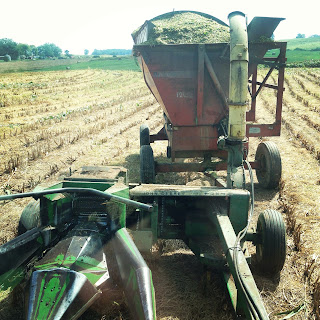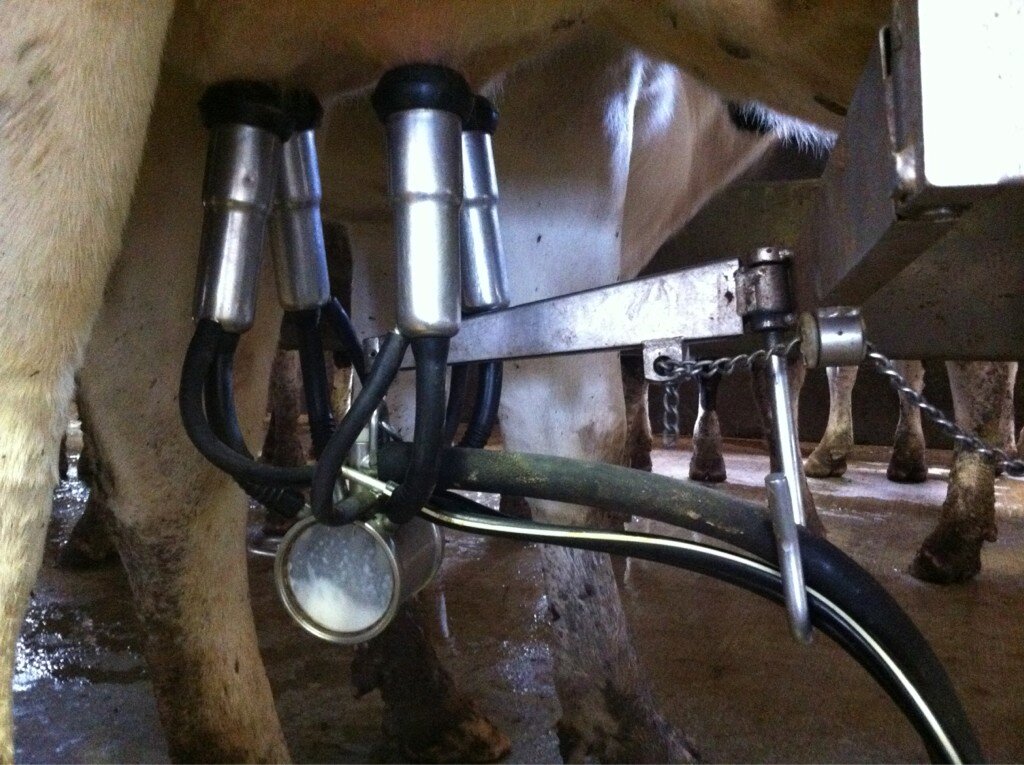 |
| PUSH!!! PUSH!!! PUSH!!! |
We have had A LOT of cows and heifers calve during November. A majority of their calves have been bulls, but that'll get turned around sooner or later.
Thanks to all the "fresh" cows, our milking herd has climbed up to 207 cows. This is the first time we've eclipsed the 200 mark in well over a year.
The switch back to Standard Time means we have the opportunity to see the first light of morning and sunrise every day before we finish the morning milking.
A larger milking herd (and those cows increasing their production) means that we're spending more time in the barn every day. My wife and kids have had to leave for school some mornings before I could get home for breakfast. But on the plus side, more cows = more milk = FULL MILK TANK!!!
Aside from the cows, I've planted quite a bit of wheat and ryegrass for them to graze next Spring...
...I've slung a little "Water 'n Poo" to help fertilize pastures...
I like big bags and I cannot lie! You udder lovers can't deny! #cowtunes
— Will Gilmer (@gilmerdairy) November 19, 2013
...engaged in some Twitter nonsense...
...and we've generally been finishing both the field and milking chores just before sundown.
| Though it's cold and lonely in the deep, dark night...I can see to plant my wheat by the GPS light. |
(though I did run a little late planting wheat one night)
Despite the long, busy days on the farm, our family has still been able to find our way to Dear Old State for a couple of ballgames.
And the sun comes up again each morning, bringing with it new challenges, new opportunities, and a renewed sense of appreciation for the wonderful life I've been blessed with.










































